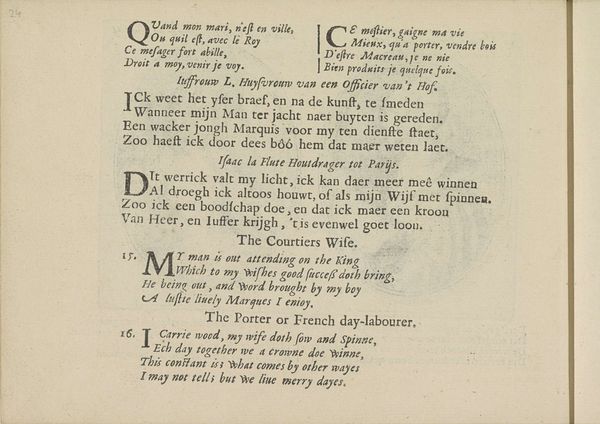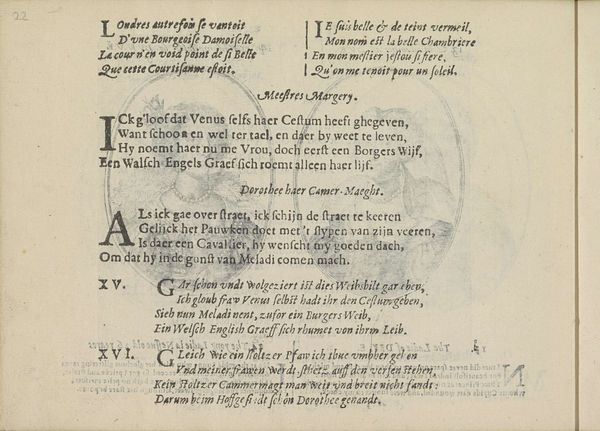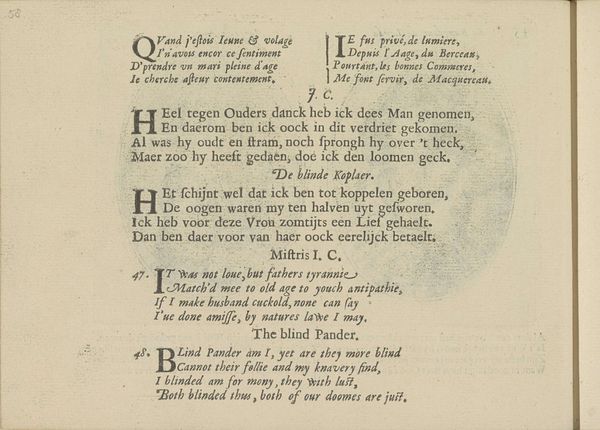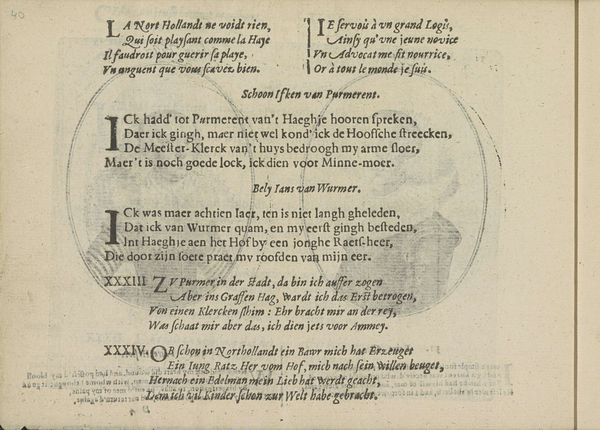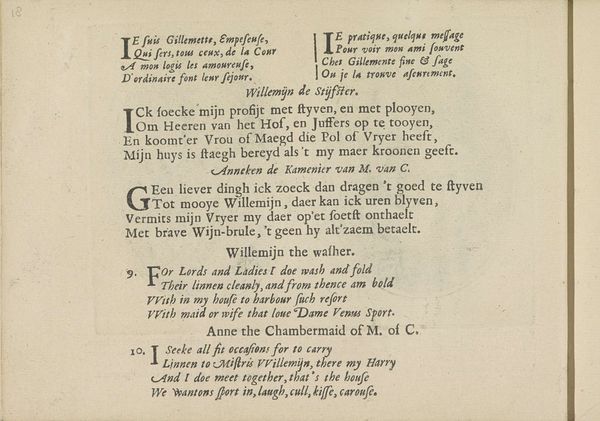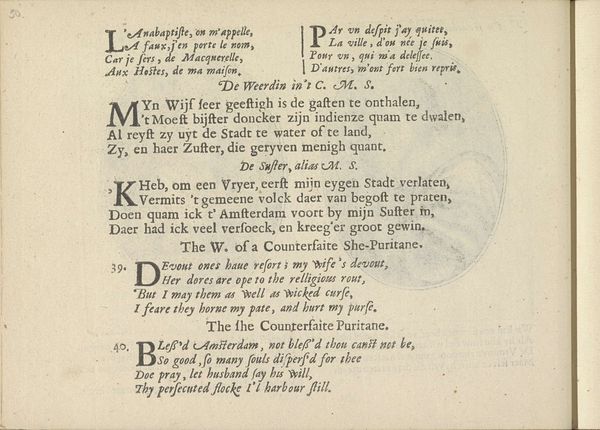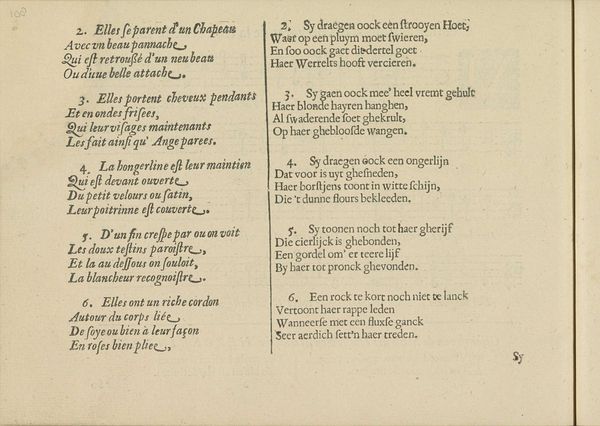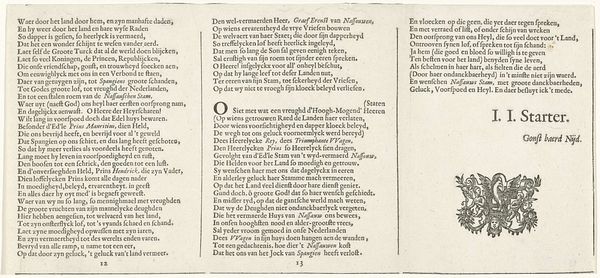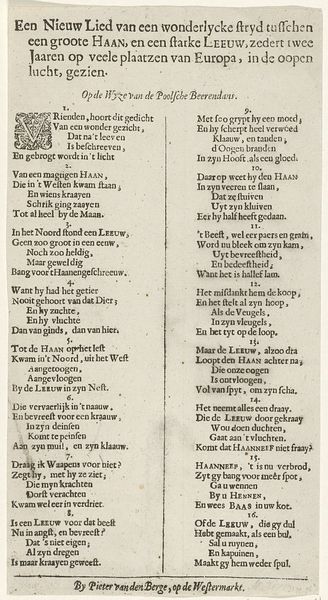
Kwatrijnen bij voorstellingen van de Heer van S.H. en zijn vrouw 1641
0:00
0:00
print, textile, typography, engraving
#
aged paper
#
hand written
#
hand-lettering
# print
#
hand drawn type
#
hand lettering
#
textile
#
personal sketchbook
#
typography
#
hand-drawn typeface
#
pen work
#
sketchbook drawing
#
sketchbook art
#
engraving
#
calligraphy
Dimensions: height 140 mm, width 190 mm
Copyright: Rijks Museum: Open Domain
Curator: Today we’re looking at "Kwatrijnen bij voorstellingen van de Heer van S.H. en zijn vrouw," a print created in 1641 by Crispijn van de Passe the Younger, housed here at the Rijksmuseum. It's a fascinating piece, an engraving that combines image and text in a rather unique way. Editor: My first impression is…intimate. It’s as though we are intruding on a very personal document. The texture of the aged paper, combined with the handwritten-style type, creates an incredible sense of immediacy. There is pain revealed here in both the imagery and the words. Curator: That feeling resonates, considering the history of these types of prints. They often acted as more than just decorative items; they were statements, meant to communicate complex social realities. The verses paired with the depictions of the Lord and Lady of S.H. offer, in each of their voices, reflections on their marriages, on age, on regret, and hope. Editor: Precisely. Looking closer at the texts, we can see an exploration of power dynamics, especially considering the young age claimed by the wife and how that impacts marriage and ownership over women. We even have various points of view on the same social construct, and the way women in particular were valued as a commodity. The writing feels confessional and invites scrutiny through a very controlled format. Curator: The use of language is itself a powerful symbol. The shifts between Dutch, French and English, point not only to the educated class that could engage with it, but it also reveals a society influenced by different cultures that speak in differing societal perspectives. I find this interesting, that the intersectionality of language is used to emphasize their experiences, almost as an endorsement of different vantage points and shared emotion. Editor: I completely agree! And let's consider how such personal writings entering the public domain could shift how we consider marriage itself. Imagine the bravery to showcase such vulnerable sentiments through the printing press during the early modern age when one’s position and virtue was paramount! Curator: A sentiment that feels both familiar and challenging, even today. The delicate details in the letterforms, the visual weight of the aged page—it all comes together to speak across the ages. Editor: This piece serves as a powerful artifact and a testament to the complexities of the relationships as viewed from an intersectional, historical lens, offering profound insights into gender and identity in the 17th century. It invites introspection about those values.
Comments
No comments
Be the first to comment and join the conversation on the ultimate creative platform.
